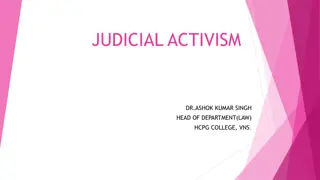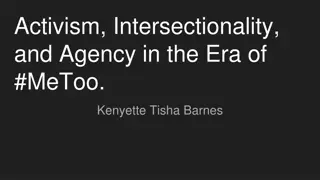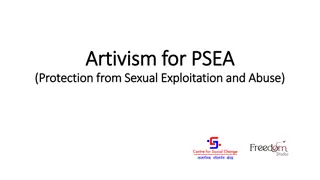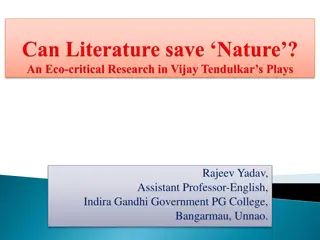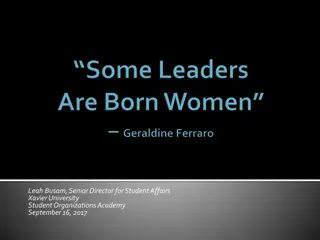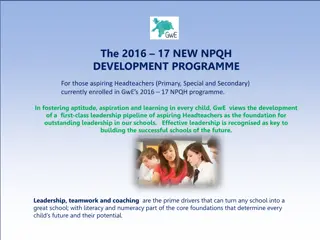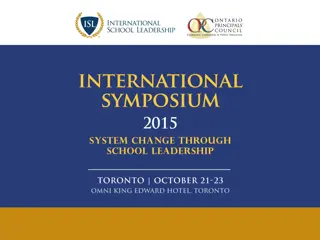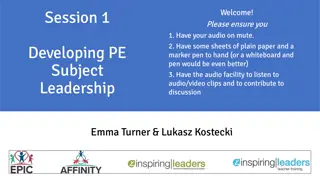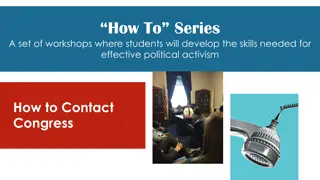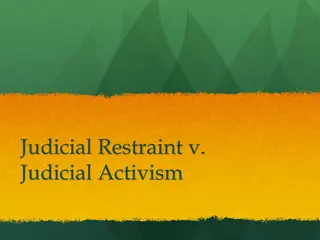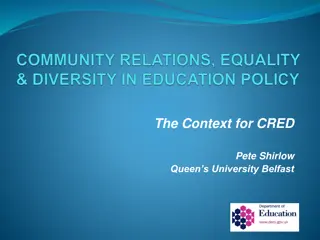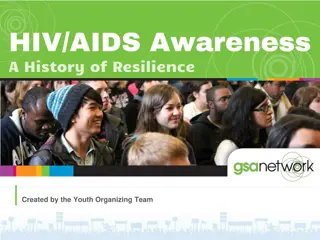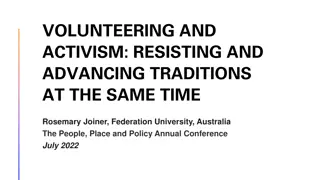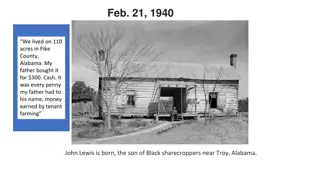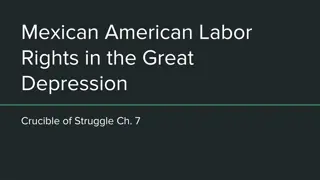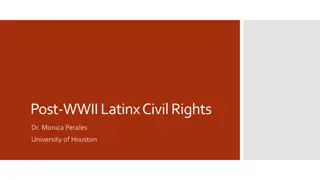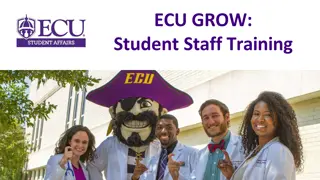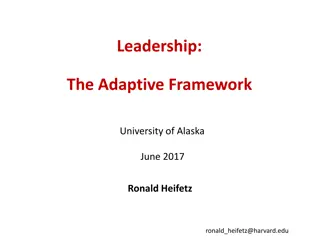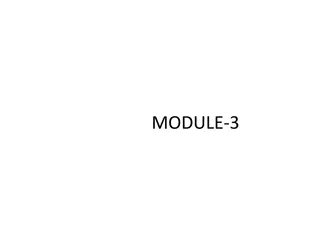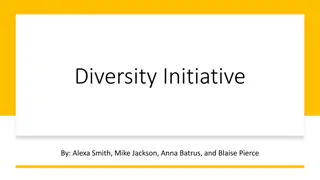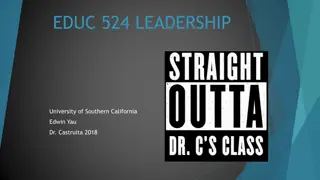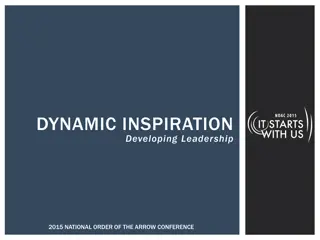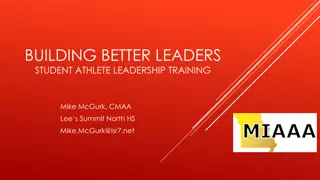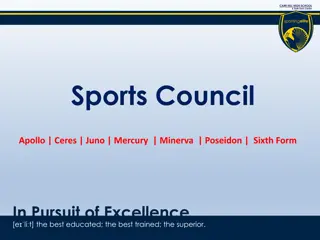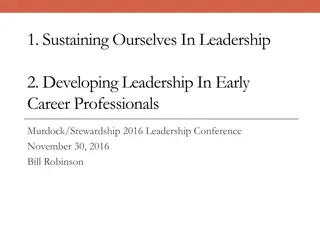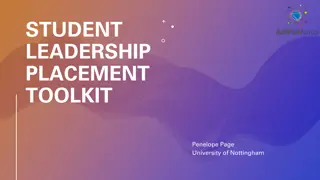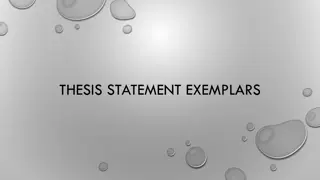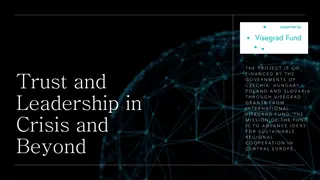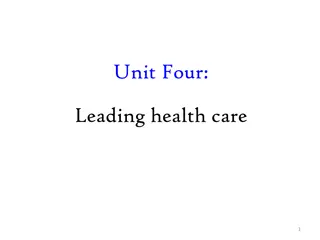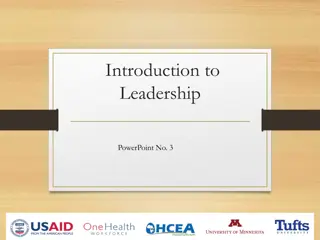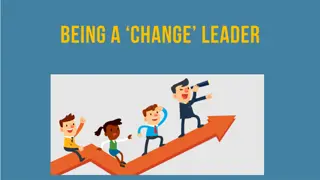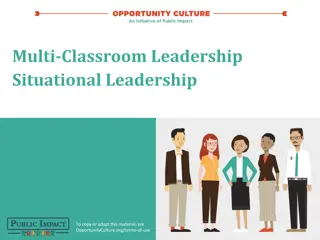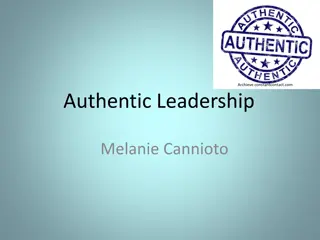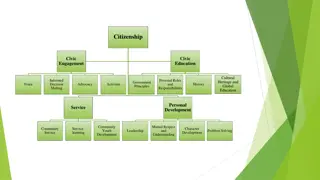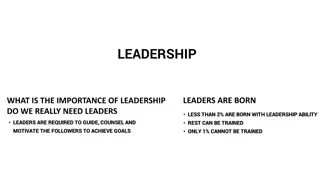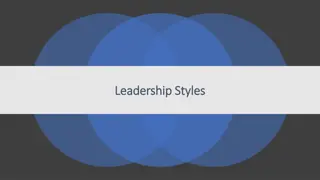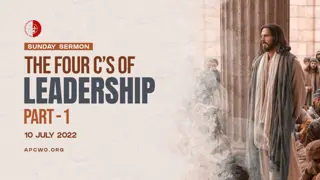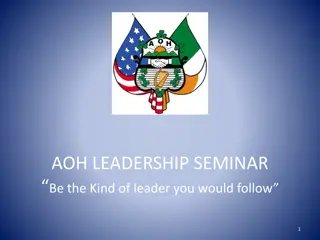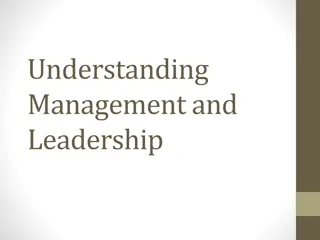Understanding Student Activism and Leadership Development
This content delves into the evolving perspectives on student activism, highlighting its role as a legitimate source of leadership development. It explores various forms of activism, from direct action to online engagement, emphasizing the importance of active participation over slacktivism. Additionally, it provides essential guidance on protestors' rights and actions during protests. Ultimately, it underscores the lasting impact of student activism on personal, civic, and professional growth.
Uploaded on Sep 29, 2024 | 0 Views
Download Presentation

Please find below an Image/Link to download the presentation.
The content on the website is provided AS IS for your information and personal use only. It may not be sold, licensed, or shared on other websites without obtaining consent from the author. Download presentation by click this link. If you encounter any issues during the download, it is possible that the publisher has removed the file from their server.
E N D
Presentation Transcript
STUDENT ACTIVISM NANCY GUZMAN 14 M 19
Direct action- protest, rallies Protest by Purchasing/boycotting TYPES OF ACTIVISM Art Social media content Petitions, townhalls, contacting elected officials It can be "violent or peaceful, noisy or quiet actions taken by groups of people, [in] attempts to alter society according to the desires of those taking action" (Jordan, 2002, p.8).
Attitudes around activism have shifted from considering engagement in activism as a detraction from learning to a rich source of student personal and leadership development. However, activism is not an activity that is nurtured.
LEGITIMATE SOURCE OF LEADERSHIP DEVELOPMENT Scholarship legitimizes student activism as a rich source of personal, civic and professional development with lasting effects decades after initial engagement (25+ years after) Development of ethical, courageous leaders Ripple effect on social change beyond the student's time on campus On campus protests illuminate opportunities for growth within the institution Vanessa Williamson, brookings.edu
BEWARE OF SLACKTIVISM Phenomenon is defined as: a form of self-aggrandizing, politically infective activism comprised of liking and sharing without direct involvement (Cabrera, Matias & Montoya, 2017). Online action plays a facilitating role for in-person action, but not always. The likelihood that someone will engage in-person as opposed to just online depends on past experience with activism and belief in the cause and in the importance of participating (Wilkins, Livingstone & Levine, 2019). Liking and sharing without direct action of any kind does not affect change If content creators focus on the why they may be more likely to mobilize people to direct action (protest, petition, donation).
1. The right to protest is a fundamental human right guaranteed by the constitution and the 1st amendment 2. The police s main job during a protest is to deescalate and protect your right to protest 3. If you are stopped by the police, ask if you are free to go and calmly walk away 4. In the event that you are arrested: PROTESTORS KNOW YOUR RIGHTS Ask for a lawyer right away Do not sign anything Don t agree to anything without a layer present 5. You have the right to consent or decline to search of person & belongings. You do not need turn in photos or footage without a warrant 6. If you believe that your rights were violated document everything you remember, get then contact of witnesses and photograph evidence/injury. https://www.aclu.org/know- your-rights/protesters-rights/
ROLE OF EDUCATORS Students are working to hold the institution accountable for missions and vision statements. Welcome dissent as a start to honest and open dialogue and fulfill those statements. Build relationships with students before the protests begin by creating an environment where student feedback is at the core of assessment and policy decisions. Respond once the protests begin make meaningful attempts to listen to student concerns, demystifying the feeling that no one is listening or doing anything about the issue. Online narratives reflect offline pain, be present, and be ready to respond. Through engaging, nurturing and sustaining a constant dialogue with students in virtual space, we can transform physical spaces (Gismondi & Osteen, 2017).
ROLE OF EDUCATORS CONT. Respectactivists commitment and acknowledge their protest. Direct action poses real risks for the students, recognize that if they have gone to these extremes of exposing themselves to harm, we need to take them seriously, and listen. Even if we disagree with their goals or their process. As Cabrera et al., (2017) remind us, activism requires coordinated collective hope despite massive structural barriers, strategic leveraging of power despite students having little (Cabrera, Matias & Montoya, 2017), and for that students deserve our respect for their courage to act. Help student activists reflect and understand with greater depth their beliefs, demands, and actions. Ultimately, any change on campus big or small is more effective when the institution and the students are working in alignment. Show student activists that you are a partner invite them to share their concerns and actively listen. Collaborate on a resolution their demands, plan with them, and be transparent on process and progress.


